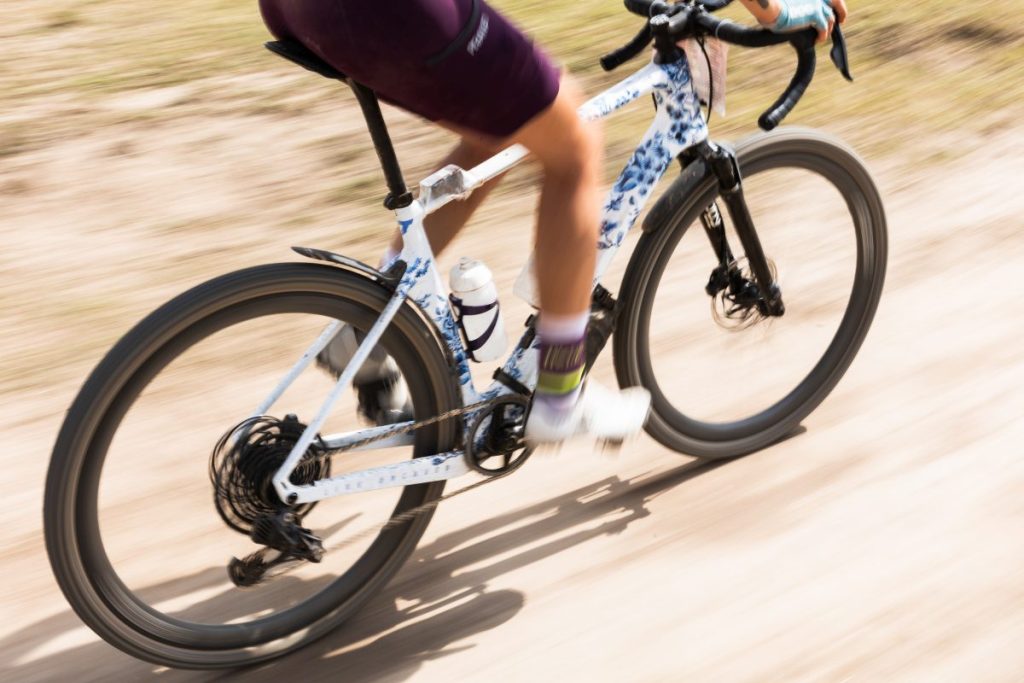Why (almost) all the gravel pros will be running fatter tires in 2025 – Canadian Cycling Magazine

If you’ve been following the world of gravel racing, you’ve likely noticed an inflationary trend—not in entry fees, but in tire sizes. What started with 40mm tires as a standard has quickly ballooned to 45mm, 50mm and even 2.1-inch MTB tires on drop-bar bikes. The shift was most obvious during the 2024 Life Time Grand Prix, where a few riders, like Keegan Swenson, started dominating on tires that looked comically oversized. Soon after, the rest of the field followed suit.But why are tires getting bigger? Is this just another fleeting trend, or is it a shift grounded in science and performance? And does it benefit casual riders as much as racers?The move toward fatter tires isn’t just about aesthetics—it’s about performance. Traditionally, narrower tires were thought to be faster because they had less contact with the ground, reducing rolling resistance. But over the past decade, research has flipped that assumption. Wider tires, when run at lower pressures, can actually roll faster than their narrower counterparts on imperfect surfaces.Andrew L’Esperance, a pro racer with a mechanical engineer degree explains:
“With a wider tire, you’re riding more on ‘top’ of the gravel versus ‘in’ it. This reduces rolling resistance on rough terrain. Plus, the increased volume allows the tire to conform to the surface better, improving comfort and reducing the chance of pinch flats.”This is why world cup XC racers are now favoring 2.4-inch tires, and why road cyclists have largely abandoned 21mm tires in favor of 28-30mm options. The same logic applies to gravel, where the terrain is often unpredictable.Gravel racing is uniquely positioned to embrace wider tires. Without a long-standing tradition dictating tire widths, gravel bikes have evolved rapidly, with many now accommodating 2.2-inch MTB tires. While early adopters stuck to narrower 40mm tires, rough courses like Unbound and Big Sugar have pushed racers toward larger volumes.Haley Smith, the 2022 Life Time Grand Prix winner, highlights the practical benefits:
“Wider tires let you float over rocky sections that might otherwise cause flats. They also absorb bumps better, giving you more compliance and control.”For events lasting eight or more hours, the added comfort of wider tires can be a game-changer. Riders also report being able to ditch tire inserts, saving weight while maintaining durability.Despite the trend toward bigger tires, there’s no one-size-fits-all solution. Both Smith and L’Esperance agree that tire choice depends on the course. For smoother gravel, a 45mm tire offers a good balance of speed and comfort. For rougher events like Unbound, a 2.2-inch tire might be the better option.“The beauty of gravel bikes is their versatility,” says L’Esperance. “You can adapt your setup to where and how you ride.”For everyday riders, this adaptability is a boon. Wider tires provide a more forgiving ride, better handling on mixed terrain and fewer flats—all advantages that casual cyclists can appreciate.One potential downside to bigger tires is aerodynamics. Wider profiles create more drag, which could be a concern in high-speed gravel races. However, L’Esperance notes that comfort and control often outweigh aero gains:
“If bigger tires allow you to stay in an aero position longer, that can offset the additional drag.”Smith agrees, adding:
“You’re only aero if you can keep moving forward. If big tires let you put out more power and avoid flats, that’s more aero than sitting on the side of the road.”As tire sizes creep toward 2.2 inches, it begs the question: will gravel bikes just become drop-bar mountain bikes? L’Esperance thinks there’s a limit:
“I think we’ll top out around 2.2 inches for gravel. Beyond that, it’s just mountain biking.”Smith adds with a laugh: “At some point, who says a mountain bike has to have flat bars?”While the move to wider tires might seem like a race-driven trend, the benefits extend far beyond the podium. For recreational riders, wider tires mean more versatility and confidence on diverse terrain. If you’re curious about trying bigger tires, Smith offers a practical starting point:
“Go with a 45mm tire. It’s a great middle ground for most conditions.”As gravel bikes evolve to handle bigger tires, and as tire technology continues to improve, the trend toward fatter rubber shows no signs of slowing down. Whether you’re chasing a win or just exploring new trails, wider tires promise a more comfortable, capable and enjoyable ride. And for those still shouting about their 32mm road tires—well, you can keep changing flats.Get the digital edition of Canadian Cycling Magazine
Δ


